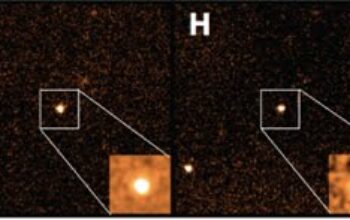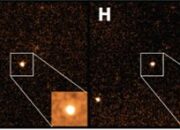Bose-Einstein Condensates (BECs) represent one of the most fascinating phenomena in the field of quantum physics, a realm where the lines between classical and quantum mechanics blur. The inception of a BEC occurs under extreme conditions, typically achieved at temperatures near absolute zero. At these frigid temperatures, a collection of atoms, usually alkali metals, loses its individuality and collapses into an indistinguishable entity. This process can be likened to a grand symphony, wherein individual instruments harmonize to create a single, resonant sound — an analogy that captures both the beauty and complexity of atomic behavior under such conditions.
In essence, BECs arise from the principles articulated by the renowned physicists Satyendra Nath Bose and Albert Einstein in the early 20th century. It is crucial to understand that Bose theorized the statistical behavior of indistinguishable particles, known as bosons, with Einstein later extending this theory to predict the existence of a new phase of matter. Their combined insights anchor BECs within the larger framework of quantum theory, illustrating how macroscopic quantum phenomena can occur at scales where classical physics dominates. Imagine a cascade of water flowing gently downstream; now consider the point where the flow becomes turbulent. Just as this turbulence leads to the emergence of complex patterns, Bose and Einstein’s theoretical framework has opened vast landscapes of inquiry into quantum behaviors.
The production of BECs involves cooling a gas of bosonic atoms, such as rubidium or sodium, to temperatures on the order of nanokelvin. This ultracold realm is where the peculiar magic of quantum mechanics reveals itself. At such low temperatures, atoms are exceedingly sluggish, their kinetic energies diminish, and quantum effects become conspicuous. The clouds of ultra-cold atoms transition from a classical gas, characterized by independent particles, to a coherent state where they behave as a single quantum entity. The non-classical characteristics of BECs manifest through phenomena such as superfluidity and quantum interference, both of which stand as testaments to the peculiar world of quantum mechanics.
Superfluidity, in particular, offers an intriguing insight into the dynamism of BECs. This phenomenon allows a BEC to flow without viscosity, comparable to an elusive wave that moves effortlessly through a medium. Scientists have marveled at the implications of this behavior, including the potential applications in precision instruments and quantum computing systems. The ability to manipulate superfluidity paves the way for technological advancements that could revolutionize various fields, from quantum sensors to energy transmission methodologies.
The exploration of BECs has not only deepened our understanding of quantum mechanics but has also invigorated discourse within other scientific disciplines. For instance, insights gleaned from Bose-Einstein condensation have catalyzed the development of novel materials and structures, prompting innovative research into quantum materials. The intricate arrangements of atoms in a BEC lead to unique functionalities that are paramount in the realm of condensed matter physics. Here, the metaphor of a double-edged sword is apt, encapsulating both the promise of new technologies and the complex challenges posed by quantum behavior.
Furthermore, the overlapping territories of cosmology and particle physics are enriched by BEC studies. The early universe, shortly after the Big Bang, can be viewed through the lens of BEC behavior, offering hypotheses about the formation of the cosmos. Such considerations evoke a sense of grandeur as scientists stand on the precipice of understanding the universe’s intricate tapestry, where quantum mechanics, thermodynamics, and gravitational forces interplay. In many ways, this endeavor is akin to peering into a vast tapestry woven of complex threads, seeking to comprehend the patterns that govern existence.
A significant milestone in the history of BEC research occurred when scientists at the Massachusetts Institute of Technology successfully produced the first Bose-Einstein Condensate in 1995. This historic achievement was widely celebrated within the scientific community, marking the birth of a new frontier in condensed matter physics. Subsequently, the elucidation of various properties of BECs has unveiled a plethora of applications in technological advancements and theoretical frameworks. The research community has since expanded its focus to employ different mediums, exploring non-bosonic systems, exciton-polariton condensates, and photonic BECs, among others. These forays reflect an ever-deepening quest for knowledge as researchers continue to push the boundaries of our understanding.
The future of BEC research is promising, as new methodologies and technologies emerge for the manipulation and observation of ultracold atoms. Advanced imaging techniques and the integration of artificial intelligence in experimental setups herald a new era. These innovations promise to unravel even more complex quantum behaviors and correlations, heightening the allure of BEC studies in a landscape where atomic interactions and quantum states intertwine. Scholars and enthusiasts alike are drawn to the enigmatic nature of BECs, where the coldest atoms ignite a fervent curiosity in the hottest topics of modern physics.
In conclusion, Bose-Einstein Condensates serve as a captivating intersection of quantum mechanics and macroscopic phenomena. These unique states of matter not only deepen our comprehension of the fundamental laws governing atomic behavior but also foster multidisciplinary inquiries and technological innovations that hold significant promise for the future. As elucidated through metaphor and analogy, the journey into the heart of BECs is marked by wonder and fascination, propelling both scientific and philosophical explorations to new heights.










